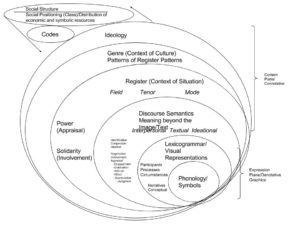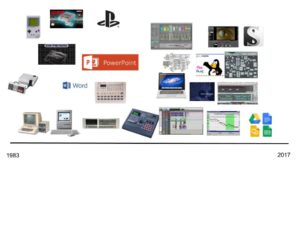In response to the “consensus view” of composition studies, as reflected by the various position statements, outcomes, and frameworks, I have some concern with the lack of precise language or metalanguage about writing. The C’s position statement defines what makes “sound writing,” which brings up the question of who gets to define what writing is “sound” and how they define it. I also have a concern about the definition of genre, which I think leads many to believe that writing must conform to some arbitrary set of conventions as defined by “experts.” Instead of shaping writing towards some social context, it is the social context that shapes writing and determines the sets of values and criteria and types of legitimate knowers, who we call experts. I become concerned when genre teaching advocates following the conventions of experts in general, as that approach promotes a lack of critical awareness. Students do need to learn genre conventions but it is in the hopes that they can then become legitimate participants in the field in hopes of eventually transforming the field for the better.
In terms of transfer, I am concerned with courses that state they are specifically teaching for transfer because their methods may actually be inhibiting it. Although I think teaching rhetorical and reflective modes of awareness is certainly beneficial, I am not convinced rhetorical awareness promotes the type of high road transfer the field is striving for. I like to relate Bernstein’s notion of horizontal and vertical discourse to low road and high road transfer, respectively. Horizontal knowledge, such as learning to tie your shoes or ride a bike, is segmented within its specific, local context. The ability or skill required to tie your shoes or ride a bike is not transferred to other contexts, for instance learning to play an instrument. Vertical knowledge, on the other hand, such as in the sciences, is cumulatively built and operates at a high level of abstraction. The field of science continually moves forward by the creation of knowledge with greater explanatory power. So courses that focus exclusively on process, and not higher order critical analytic skills or in-depth knowledge content, may be segmenting learning within specific contexts. For instance, a course on the discourse of TED Talks, where students analyze the rhetoric of TED talks, remix a TED Talk, and finally create a TED Talk of their own, may teach students a lot about TED Talks, as well as some rhetorical theory and knowledge of software, but these skills may or may not be transferable in terms of high road transfer.
Finally, I have some concerns with the portfolio focus of the third wave of assessment, as Yancey calls it. I think first we need to consider what we want assessment to do. Is assessment about giving a student a grade, or is it about helping make students’ writing better? If assessment is meant to help guide students’ writing to make it better than the assessment of work must be ongoing with explicit criteria. Not to say all portfolio grading works this way, but waiting till the end of the semester to provide holistic feedback probably will not improve students’ writing. I would also be wary of handing evaluation completely over to students as a type of reflection. In general, we need to accept that symbolic capital is unevenly distributed within our society, and that some forms of writing hold more social power than others. By not providing ongoing and appropriate feedback, we are doing students a disservice by impeding their control over discourses of power.


